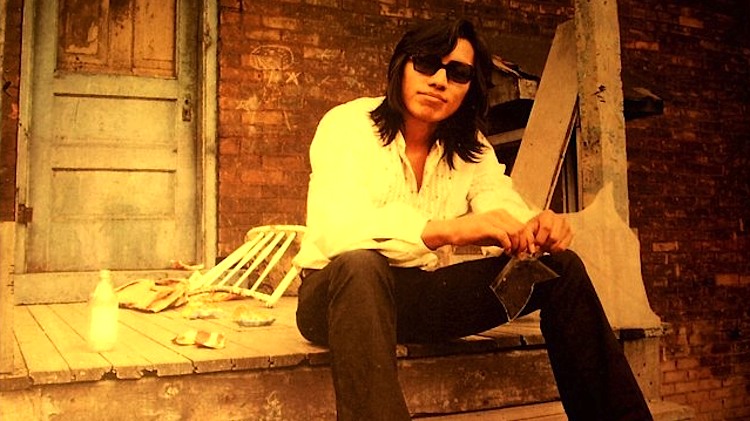By Joe Bendel. Isolated and picturesque, the Lebanese village of Taybeh offered the perfect locations for the country’s official submission for this year’s best foreign language Academy Award. The church and mosque built side by side will be particularly significant in Nadine Labaki’s stylized musical, Where Do We Go Now?, which screens during the 2012 Sundance Film Festival.
Accessible only by an impossibly torturous bridge, the Christian and Muslim inhabitants live in peace, or at least the women do. The men are uneasy in their truce as news of fresh violence in the outside world vaguely drifts in. Tired of their perpetual mourning, Amale, the Christian widow who operates the town café, organizes the women like a Lebanese Lysistrata. They sabotage the television and radios, while doing their best to distract the restive men. When all else fails, they bring in a troupe of Ukrainian strippers, in a bit of a departure from the film’s classical Greek forerunner.
In a bit of a twist, the women’s few real male allies include the village’s priest and imam, whom the film presents as friendly colleagues rather than hateful zealots. Of course, Labaki and co-writers Jihad Hojeily, and Rodney Al Haddad strenuously avoid taking sides. Indeed, the whole crux of the film is the interchangeability of the two faiths.
The occasional musical number certainly helps liven-up the proceedings. Some are rather somber, like the funeral procession taking a slight Fosse-esque detour. However, Amale’s fantasy dance with Rabih, her Muslim handyman, is pretty hot stuff. As Amale, Labaki is also rather alluring, but her smart and sophisticated presence seems at odds with the rest of the largely matronly townswomen. Indeed, she seems distinctly out of place in this town full of stock characters.
Still, the choreography is striking and Christophe Offenstein’s cinematography is often quite arresting, soaking up all the scarred beauty of the weathered village and the rugged surrounding landscape. Though well meaning, Where remains a minor film that ultimately lacks the gravitas it presumes to have by virtue of its subject matter. Pleasant for those who enjoy an unconventional movie musical, but hardly a priority at Sundance, it screens this Saturday (1/21), Wednesday (1/25), and the following Saturday (1/28) in Park City, as well as this Sunday (1/22) in Salt Lake.
SUNDANCE GRADE: B-
Posted on January 21st, 2012 at 10:06am.

